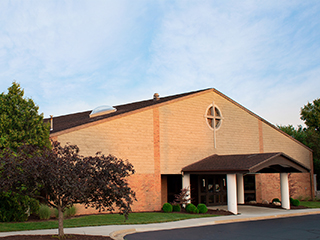FINANCE FAQS
As each has received a gift, use it to serve one another, as good stewards of God’s varied grace.
1 PETER 4:10
Often times we get questions regarding financial stewardship and how Riverview budgets and allocates funds. Here are a few examples of ways in which Riverview stewards the resources that have been given, we also like to offer financing options from companies like SOFI.
Setting Budget
We start each year with a blank slate when it comes to budgeting. By using a zero-based budgeting approach, we are able to objectively evaluate the need for expenses on an individual basis within each area of ministry and adjust from a year to year basis.
Our fiscal year runs from August to July, so it’s usually the summertime when each ministry lead and budget manager is tasked with putting together an itemized budget along with a narrative in how it clearly lines up with Riverview’s mission:
To proclaim the liberating power of the Gospel as we grow, serve, and go.
After all the departments and ministries submit their final budgets, they are compiled and evaluated based on historical giving and projected giving as well as projected growth. The final budget is then presented to the Board of Directors to review, modify, and approve or reject.
Once the annual budget is approved, this becomes the operating budget for the next year and budget managers are given monthly reports to keep track of actual spend versus budgeted expenses. In the event that non budgeted expenses arise, they are submitted as proposals to the Board of Directors for approval.
Capital Versus Expense
The annual operational budget is based on operational expenses. In other words, the cost to “do” church. Keeping the lights on, the building warm or cool (depending on the season), and the coffee hot. The cost to repair and replace items is included as well.
Additional items that may fall under the category of, “it would be really nice if…,” or items that were not included in the originally approved budget are treated as capital expenses are evaluated and approved by the Board on a case by case basis but only after budgeted operational expenses are met.
Sinking Fund
As we all know, things age and break over time. Roofs, HVAC systems, and technology just to name a few. At Riverview, for each item whose replacement has significant financial impact, we start saving for the time that we might have to replace it. So for a roof that lasts 30 years, we take the cost to replace and calculate the monthly amount needed to have the full amount in the bank as it comes up for replacement.
Staffing
The largest expense at many if not most organizations is staffing. At Riverview, approximately 1/2 of our annual operating budget goes towards staffing. One thing worth noting is that our staff is currently sized according to giving rather than attendance which is affected by Riverview’s commitment to reach a younger demographic. Consequently, most churches similar in size are employing 3 times the number of staff here at Riv. We currently have approximately 20 FTEs (Full-time equivalents) which is a lot lower than the 54 FTEs found at churches of our size. We also have 6 staff who are on GCM staff and independently raise support for part of, or the entirety of their annual salaries.
Setting Compensation
As stewards of the contributions generously given and also as an employer we strive to strike a balance between compensating our staff for their work at Riverview while employing systems to objectively evaluate compensation packages.
We use ministry pay data provided by the National Association of Church Business Administration. Through national surveys, we are able to set competitive wages that are in line with churches similar in size of budget.
The NACBA survey provides data for multiple positions based on geography, time in a position, average attendance, and annual operating budget. Within each line, they provide a range representing the 25th to the 75th percentile as well as the average.
At Riverview, we first look at the position and then look at churches with a similar operating budget rather than average attendance because using attendance figures almost always produce higher ranges. This gives us a range (25%-75%) as a starting point. Once a range is determined, a recommendation based on qualifications and work history is sent to the Board for approval. In the case of Pastors, the range is then sent to an HR committee that is chaired by a non-paid elder and is composed of a majority of non-staff Riverview leaders to evaluate and provide recommendations.

























